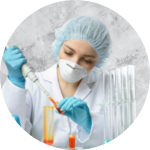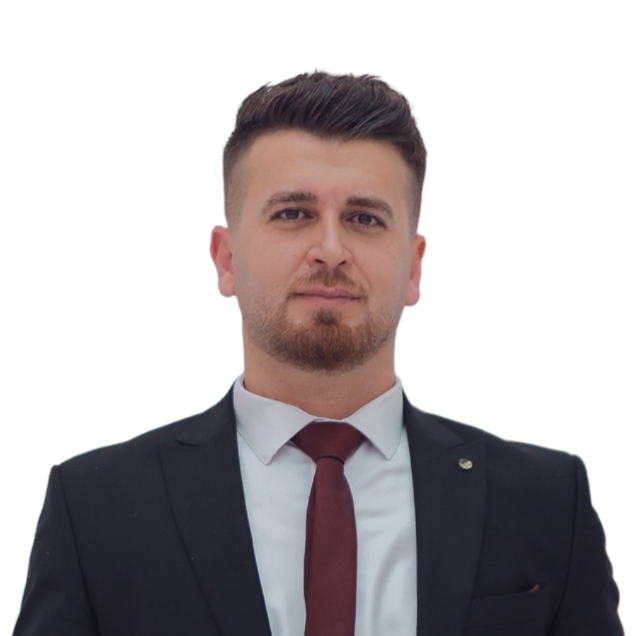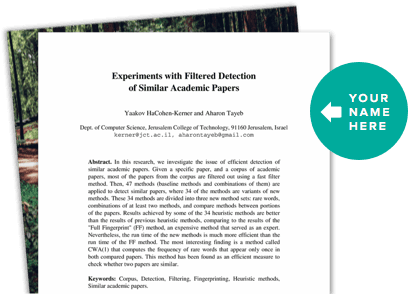About This Project
Diabetic wounds often result in amputation due to antibiotic-resistant bacteria. Our study aims to develop a novel small-molecule drug, and we have already synthesized a compound that has demonstrated strong antibacterial activity against Gram-negative bacteria, particularly Klebsiella. The goal is to further evaluate this compound as a dual action therapy that can reduce infection and accelerate recovery in diabetic patients.
Ask the Scientists
Join The DiscussionWhat is the context of this research?
Diabetic wounds, especially foot ulcers, are a major complication of diabetes and are difficult to treat due to poor blood circulation, a weakened immune system, and frequent infections with antibiotic-resistant bacteria like Klebsiella and Pseudomonas [1]. These wounds can persist for months, often leading to amputation [2]. Current treatments usually address infection or healing, but not both [3,4]. Our project focuses on bridging this gap by developing a small-molecule drug that targets bacterial infection and promotes wound healing at the same time.
What is the significance of this project?
This project addresses two urgent medical needs: antibiotic resistance and chronic wound healing. By creating a dual-action drug that fights bacteria and supports tissue repair, we aim to reduce treatment time, lower the risk of amputation, and improve recovery in diabetic patients. Globally, it is estimated that every 30 seconds, a limb is lost to diabetes-related complications, with over 1 million amputations occurring each year [5]. If successful, this approach could change how diabetic wounds are treated making therapy more efficient and accessible, especially in areas with limited healthcare resources.
What are the goals of the project?
Our goal is to synthesize and validate a drug candidate with antibacterial and wound-healing properties. The lead compound, identified through computational drug design [6], will be synthesized using organic chemistry techniques. Its structure and purity will be confirmed with IR spectroscopy, NMR, and MS [7]. Antibacterial activity will be evaluated using MIC and disk diffusion assays against Klebsiella pneumoniae and other Gram-negative bacteria [8].
Wound-healing potential will be assessed using an in vitro scratch assay with fibroblast cell lines. Cell migration and wound closure will be monitored by microscopy and quantified with imaging software. Untreated cells will be negative controls, and known wound-healing agents like epidermal growth factor (EGF) will serve as positive controls [9, 10]. These experiments will validate the compound's dual therapeutic effect in diabetic wound care.
Budget
This budget supports the experimental phase of a larger project focused on developing a dual-action drug for diabetic wound healing.
Endorsed by
 Project Timeline
Project Timeline
This project will span 8 months. In the first two months, we will focus on synthesizing the lead compound and confirming its structure. Months 3–5 will be dedicated to antibacterial and wound-healing assays. In months 6–7, we will analyze the data and validate the dual-action potential. The final month will be used to compile results, write the final report, and share outcomes with backers.
Apr 18, 2025
Project Launched
May 17, 2025
Synthesize lead compound and confirm its structure using IR, NMR, and MS.
Oct 01, 2025
Complete antibacterial testing against Klebsiella and other Gram-negative bacteria.
Dec 10, 2025
Finish in vitro wound healing assay (fibroblast scratch test).
Jan 20, 2026
Analyze and interpret experimental results for drug efficacy.
Meet the Team
Team Bio
This research integrates computational chemistry and microbiology to develop targeted treatments, aiming to deliver innovative solutions for diabetic wound care.
Assist. Prof. Dr. Rebaz Anwar Omer
Specialist in organic synthesis and computational chemistry, with research focusing on molecular modeling, DFT, and SAR studies. Author of over 118 peer-reviewed publications contributing to advancements in chemical sciences. Rebaz Anwar. Rebaz Anwar Omer - Google Scholar
ABDALLA ALI AMIN
I am a researcher specializing in computational and experimental drug discovery, with a focus on designing and developing novel inhibitors for anticancer and antibacterial therapy. My expertise spans chemistry, biochemistry, and bioorganic chemistry, with strong skills in molecular docking, synthesis, and biological evaluation of potential drug candidates.
Lab Notes
Nothing posted yet.
Project Backers
- 1Backers
- 1%Funded
- $20Total Donations
- $20.00Average Donation


